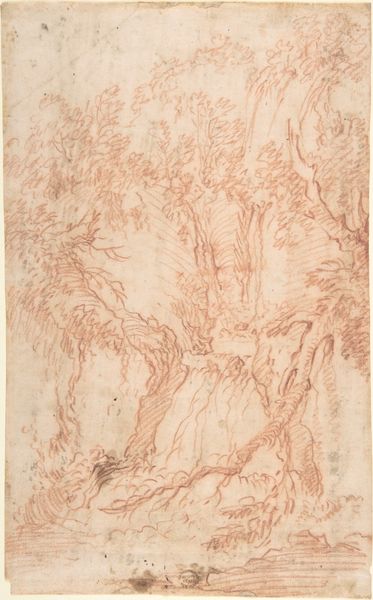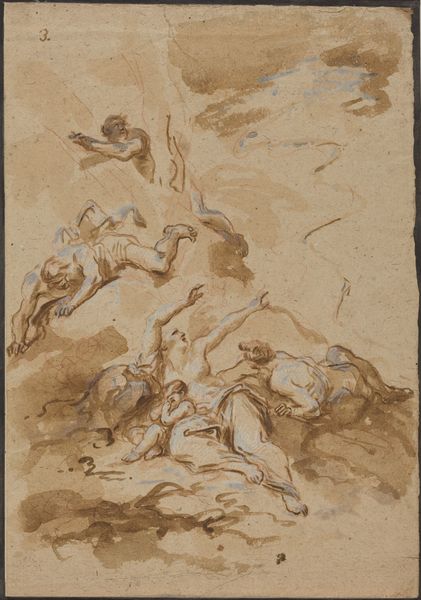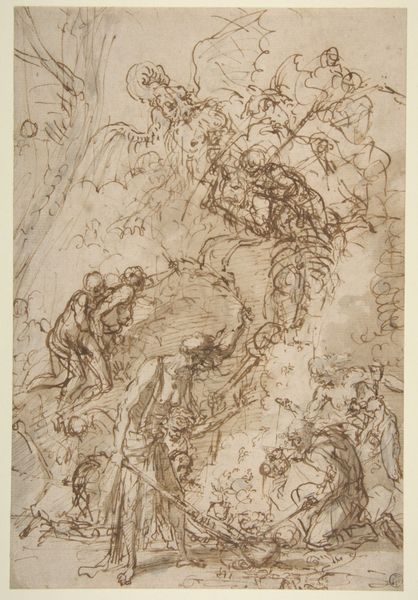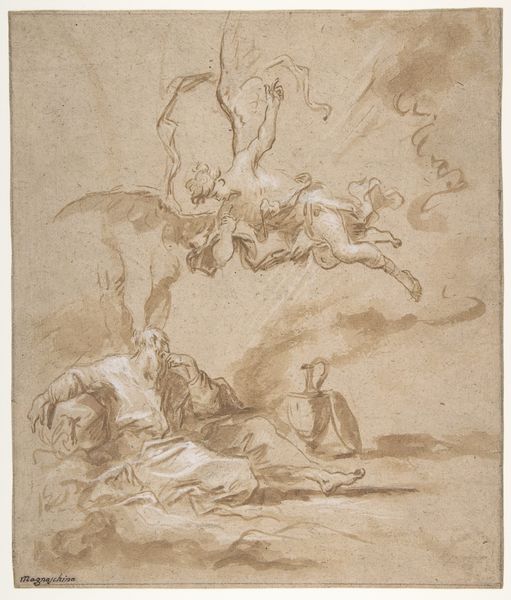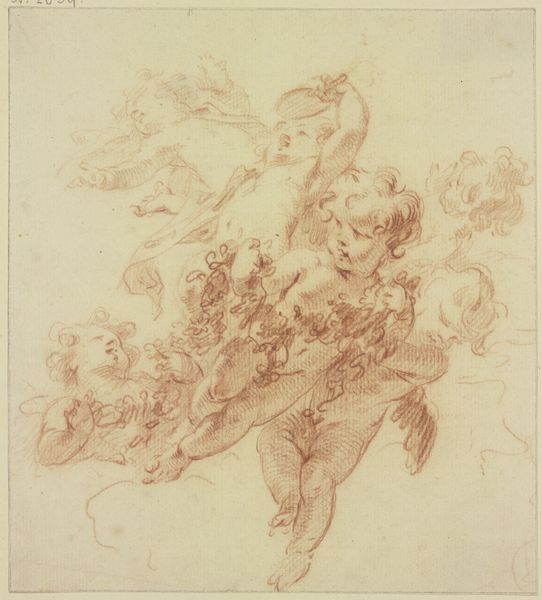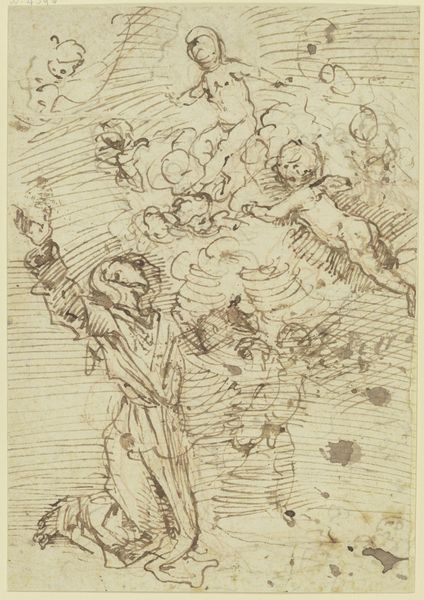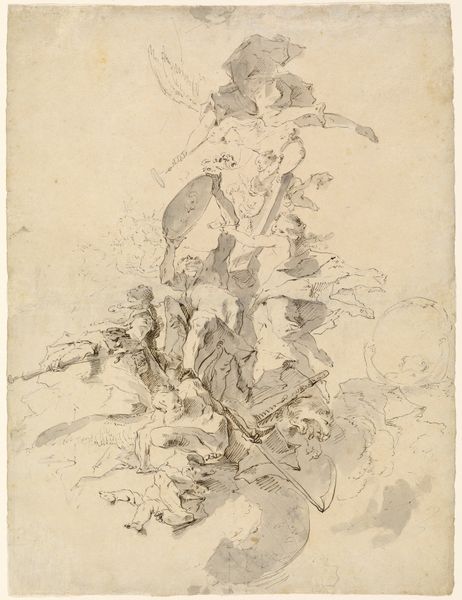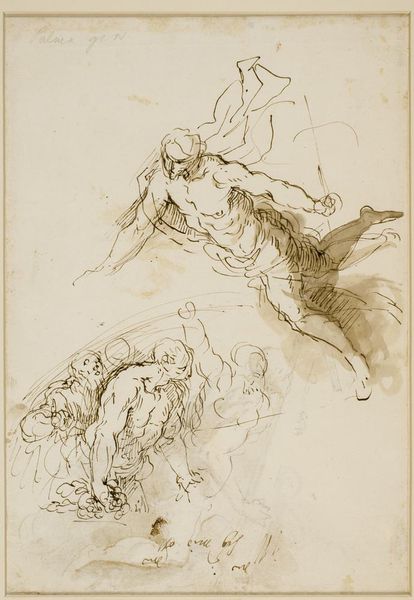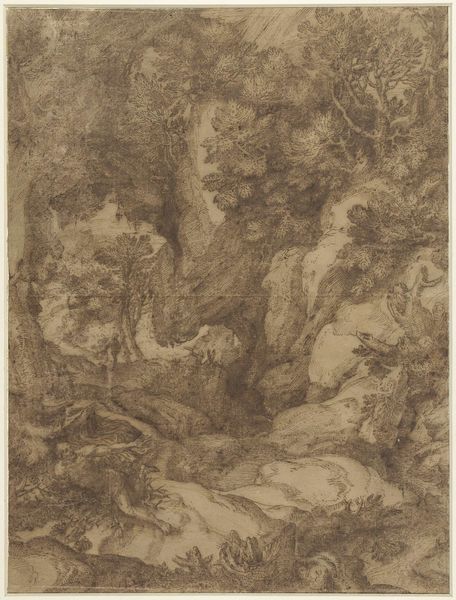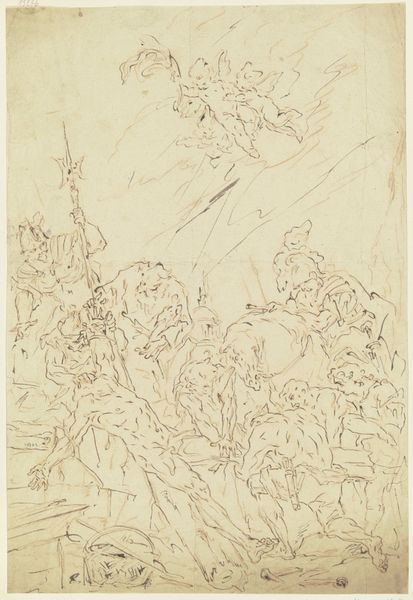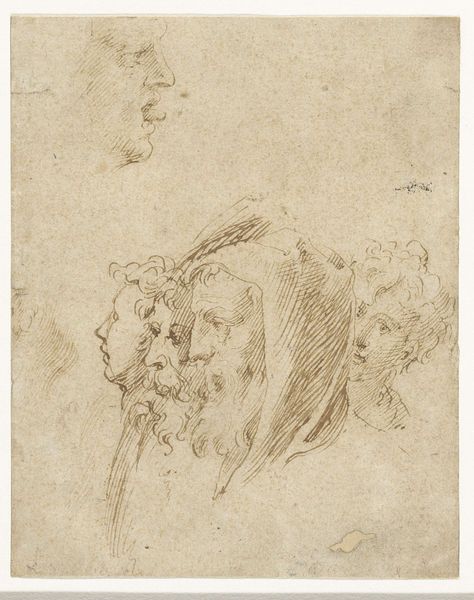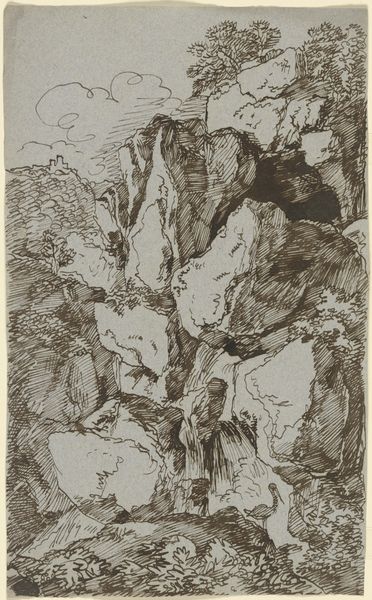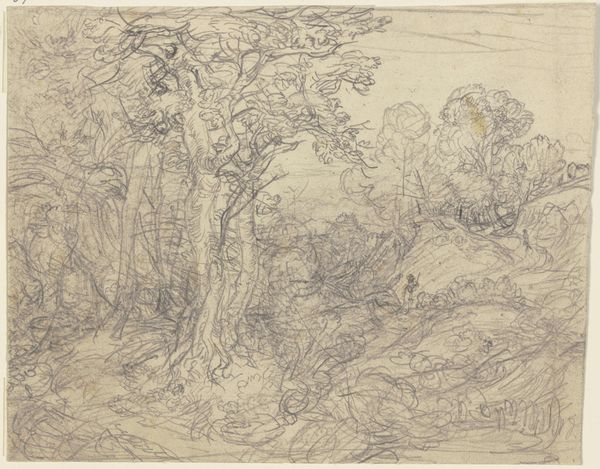![The Fall of the Rebel Angels [recto] by Parmigianino](/_next/image?url=https%3A%2F%2Fd2w8kbdekdi1gv.cloudfront.net%2FeyJidWNrZXQiOiAiYXJ0ZXJhLWltYWdlcy1idWNrZXQiLCAia2V5IjogImFydHdvcmtzLzViYmIyNTdiLTQ1OWEtNDk0Mi1hYThhLWYxMDc4MTUxYTUwYi81YmJiMjU3Yi00NTlhLTQ5NDItYWE4YS1mMTA3ODE1MWE1MGJfZnVsbC5qcGciLCAiZWRpdHMiOiB7InJlc2l6ZSI6IHsid2lkdGgiOiAxOTIwLCAiaGVpZ2h0IjogMTkyMCwgImZpdCI6ICJpbnNpZGUifX19&w=3840&q=75)
drawing, ink
#
drawing
#
ink painting
#
mannerism
#
figuration
#
ink
#
history-painting
Dimensions: overall: 19.4 x 13.8 cm (7 5/8 x 5 7/16 in.)
Copyright: National Gallery of Art: CC0 1.0
Parmigianino created this drawing, "The Fall of the Rebel Angels," in ink, sometime in the early 16th century. The first thing that strikes you is the dynamic composition of the figures and the swirling lines that suggest movement and chaos. Observe how Parmigianino uses line to create a sense of depth and drama. The angels tumble downwards, their bodies contorted, creating a vortex-like effect. The artist masterfully uses hatching and cross-hatching to model the forms and suggest the play of light and shadow. The composition lacks a clear focal point; instead, the viewer's eye is drawn into the chaotic swirl of bodies, mirroring the thematic turmoil. Consider the historical and intellectual context. The High Renaissance saw artists experimenting with perspective and anatomy to depict complex narratives. Parmigianino pushes this further by disrupting the Renaissance ideals of order and harmony. The lack of resolution in the medium itself reflects the dramatic instability of the scene. Note the formal qualities—the dynamic lines and ambiguous space—continue to provoke re-interpretation, reflecting the inherent instability of meaning within artistic creation.
Comments
No comments
Be the first to comment and join the conversation on the ultimate creative platform.
